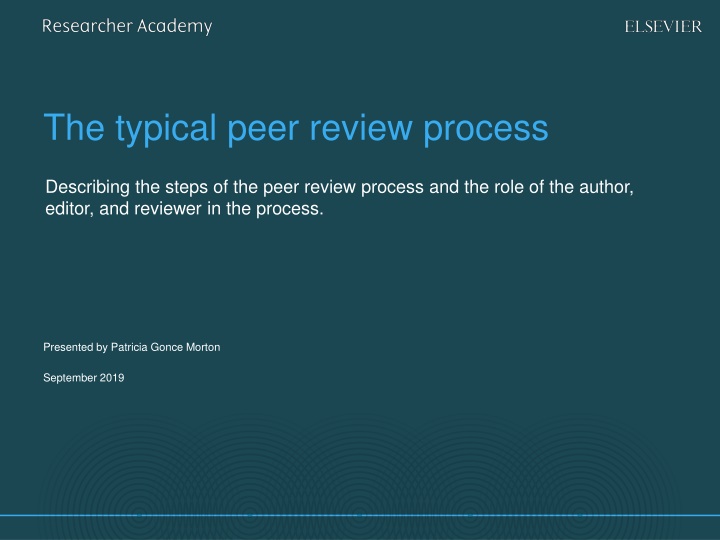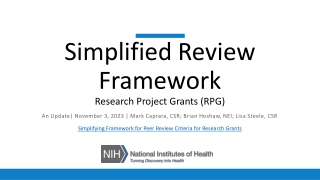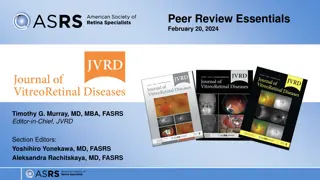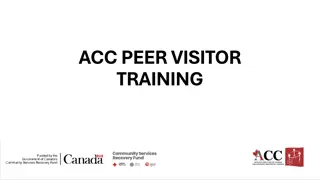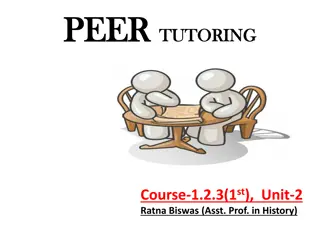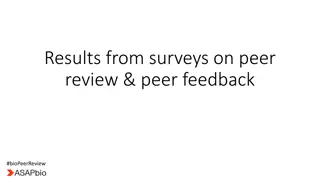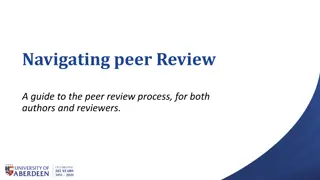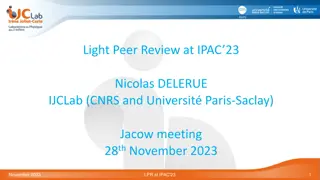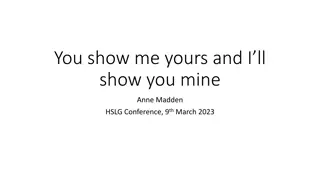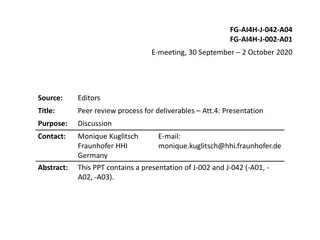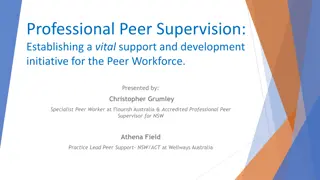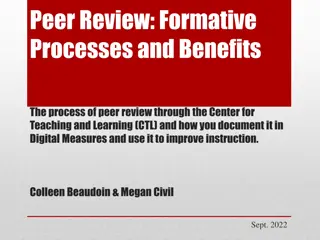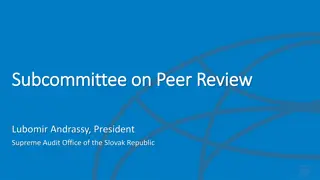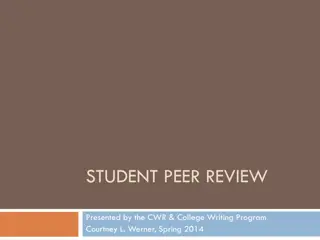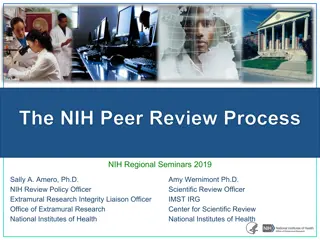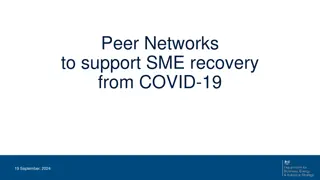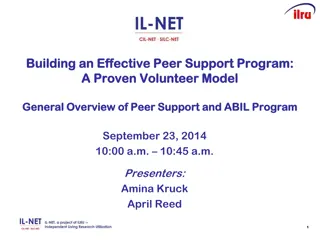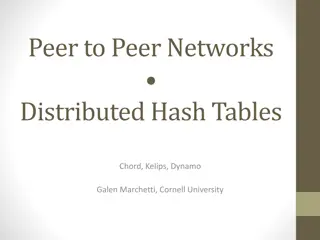The Peer Review Process
The steps and roles in peer review involving authors, editors, and reviewers. Learn how manuscripts are evaluated, selected, or rejected in academic journals.
Download Presentation

Please find below an Image/Link to download the presentation.
The content on the website is provided AS IS for your information and personal use only. It may not be sold, licensed, or shared on other websites without obtaining consent from the author.If you encounter any issues during the download, it is possible that the publisher has removed the file from their server.
You are allowed to download the files provided on this website for personal or commercial use, subject to the condition that they are used lawfully. All files are the property of their respective owners.
The content on the website is provided AS IS for your information and personal use only. It may not be sold, licensed, or shared on other websites without obtaining consent from the author.
E N D
Presentation Transcript
The typical peer review process Describing the steps of the peer review process and the role of the author, editor, and reviewer in the process. Presented by Patricia Gonce Morton September 2019
Patricia Gonce Morton, PhD, RN, FAAN Dean Emeritus, University of Utah College of Nursing Editor, the Journal of Professional Nursing, the official journal of the American Association of Colleges of Nursing Trish.Morton@Utah.edu
Authors submit article to journal Usually submitted through the journal s electronic system. Ideally, the authors have read and followed the author guidelines. Authors may have sent a letter of query prior to submission.
General impression Structure/length/readability Is the manuscript properly structured? Is the length appropriate? Are the figures useful and readable? Is the paper unambiguous and comprehensible, even if the English is not perfect?
Journal editor evaluates the paper Is the topic in alignment with the purpose and focus of the journal? If no, the paper is rejected. Many papers are rejected at this stage because the topic is not a good match for the journal. If yes, the editor may further evaluate for depth and scope of topic, writing quality, logical flow of ideas, novelty of topic. If deemed acceptable, the editor will select reviewers. If not, the editor will reject the paper and not send it out for review.
Journal editor evaluates the paper The editor will determine if the paper is too similar to a recently published paper or one that is in the process of being published. If too similar If not too similar reject move to the review process
Journal editor evaluates the paper The journal may use a plagiarism checking software tool. Editor must use careful judgement if there is too much similarity of submitted paper with previous published works. If too much similarity, the paper may be rejected and not sent out for review.
Selecting the reviewer Many journals aim for two reviewers per paper. The editor has a database of reviewers and can access a reviewer by topic. Goal is to select a review with expertise in the topic and/or the method. Editor attempts to select a reviewer with no conflict of interest such as a reviewer from the same institution as the author. Reviewer is sent directions and asked to return the review in about two to four weeks on average. Reviewer is requested to accept or decline the review invitation.
Editor receives reviews Often reviewers agree to review a paper and produce nothing even when they receive reminders. If this problem occurs, editor must find another reviewer. Editors may receive reviews that are of no real help. Reviewer may have only focused on spelling, punctuation, and grammar and offered no real critique of the content of the paper. If this problem occurs, editor must find another reviewer. Reviewers often do not return the review in the requested time. Result is DELAY, DELAY, DELAY !!! And frustrated authors.
Editor assesses the reviews Editor looks for comments regarding: Content accuracy, depth, breadth, currency Appropriateness of paper for journal s readers Quality and clarity of authors writing Organization and flow of ideas Adequacy of review of the literature Appropriateness of the method Use of correct statistics and data displayed in tables or graphs Conclusions supported by data Recency of references Evidence of ethical breaches
Editor assesses the reviews The editor screens for the tone of the review. Harsh, unprofessional, condescending comments are not appropriate and may be removed by the editor. Editor is seeking a constructive tone with comments that are appropriate and useful to an author.
Editor assesses the reviews Editor makes a decision: Accept with no revisions (very rarely done.) Revise - major revisions needed. Revise minor revisions needed. Reject
Editor assesses the reviews Editor receives the revised version of the paper and may: Accept the revised version. Send the revised version back to the original reviewer to see if author addressed concerns. Not ideal at this stage to send the revised version to a new reviewer.
Summary Authors submit their paper to the editor via an electronic system. The editor completes an initial screening and decides to reject the paper or to send it out for review. The editor selects two or more reviewers with expertise in the topic and/or research method. Reviewers can positively or negatively impact the progress of the paper based on the time they deliver their reports. Editor assesses the quality and tone of the review. Editors make a decision based on their review of the paper and the comments from the reviewers.
